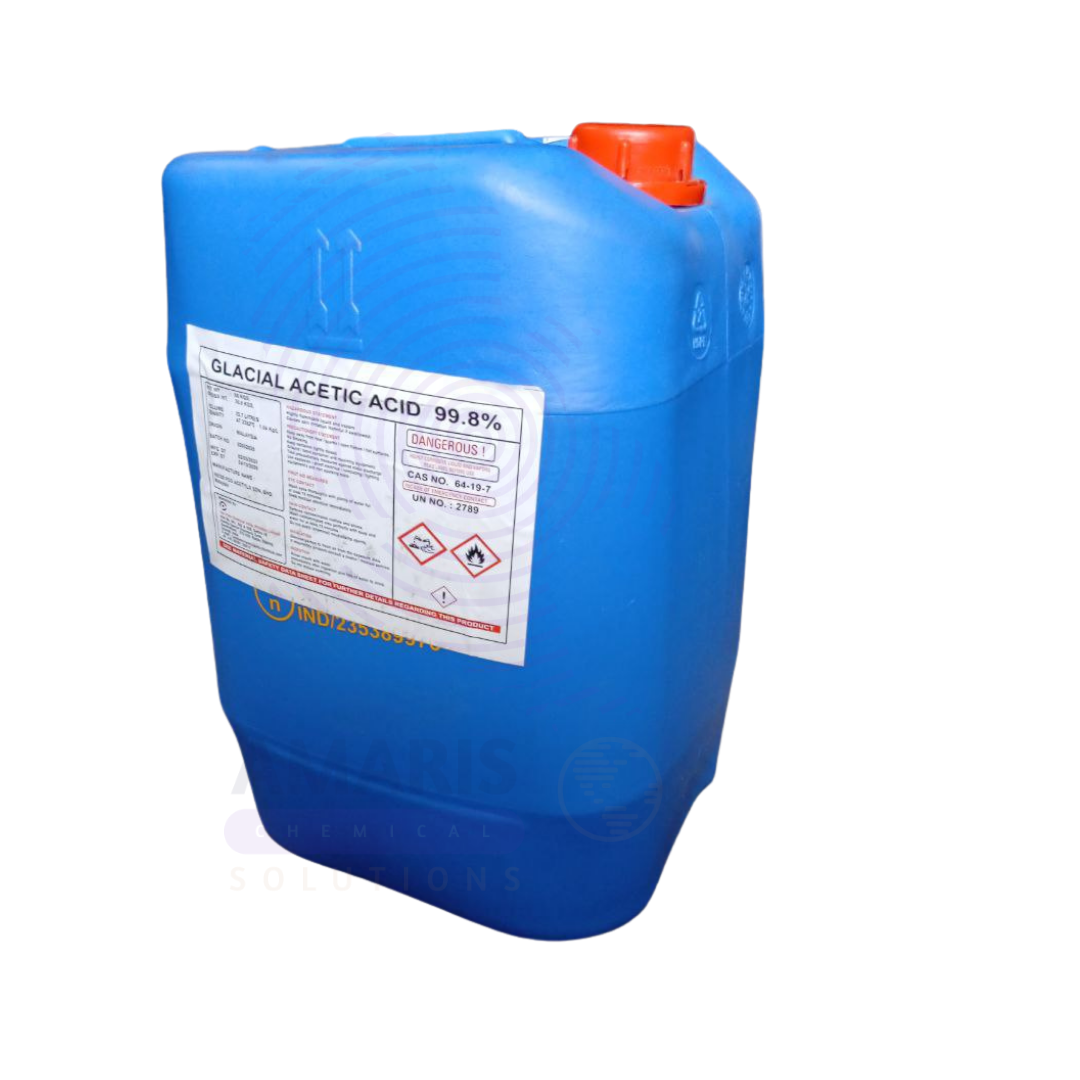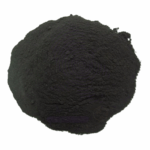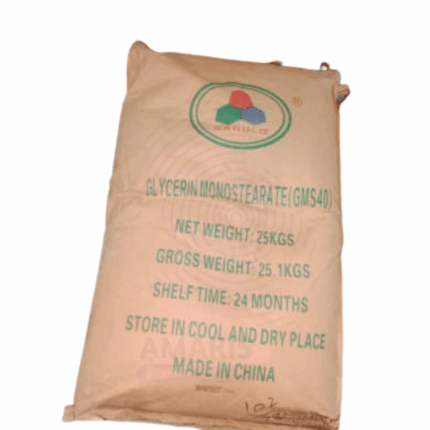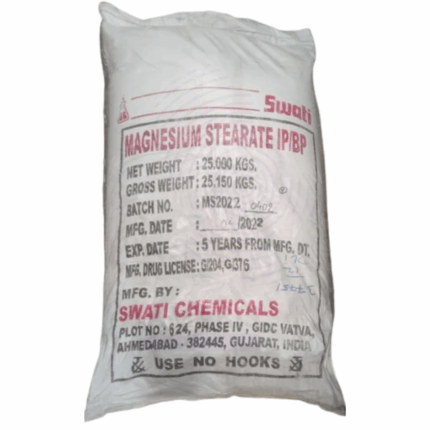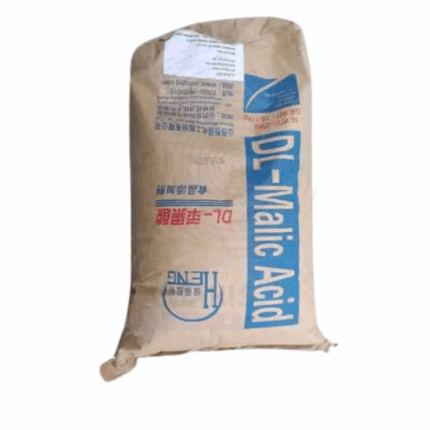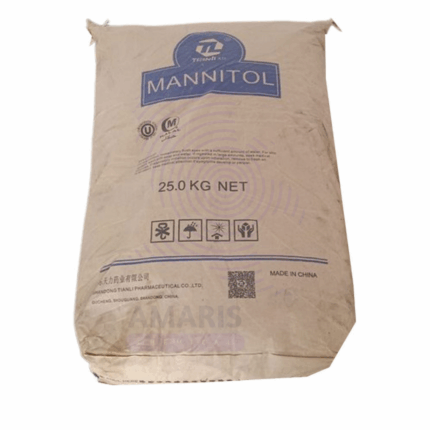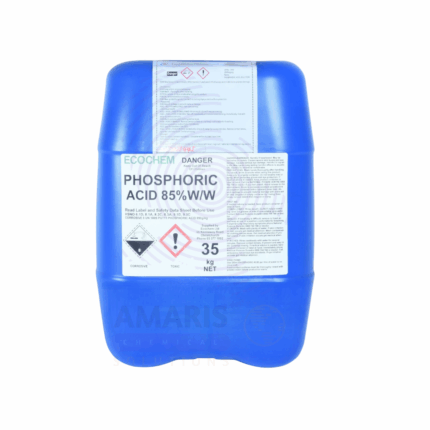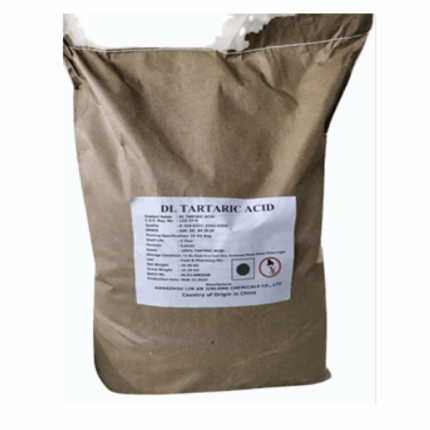
Glacial Acetic Acid Tech grade
$ 2.25 Original price was: $ 2.25.$ 2.16Current price is: $ 2.16.
Glacial Acetic Acid Food Grade
$ 2.29 Original price was: $ 2.29.$ 2.17Current price is: $ 2.17.
Whatsapp Order
Glacial Acetic Acid Food Grade is a clear, colorless liquid organic compound with a pungent vinegar-like odor. It is a high-purity form of acetic acid specifically produced and processed for safe use in food applications. As the main component of vinegar (after dilution), it serves as a critical flavoring agent, pH adjuster, and preservative in the food industry. Food-grade acetic acid typically has a concentration of 80-100% (glacial acetic acid) or is diluted to lower concentrations (4-20%) for specific applications.
Category: Acidulants
Tags: Acetic acid food grade, Beverage ingredient, Flavoring agent, Food additive, Vinegar acid
Description
Table of Contents
Toggle
Glacial Acetic Acid Food Grade
Primary Uses
- Vinegar Production
- The most common use; diluted acetic acid (4-8%) is sold as white vinegar, apple cider vinegar, and wine vinegar.
- Used in pickling, sauces, dressings, and condiments (ketchup, mustard, mayonnaise)
- Food Preservation & Pickling
- Acts as a natural preservative (inhibits bacterial/fungal growth) in pickled vegetables, olives, and canned foods.
- Flavor Enhancer & Acidulant
- Adds tangy/sour taste to snacks, chips, candies, and processed foods.
- Used in baked goods (as a leavening agent when combined with baking soda).
- Bakery & Confectionery
- Helps in dough conditioning and pH adjustment in bread and pastry production.
- Used in candy glazes and gelatin desserts for texture control.
- Dairy & Cheese Processing
- Used in cheese making (e.g., mozzarella, cottage cheese) for curd formation.
Secondary Uses
- Beverage Industry
- Adjusts acidity in soft drinks, fruit juices, and alcoholic beverages.
- Meat & Seafood Processing
- Helps in meat curing and marination (enhances tenderness and shelf life).
- Used in seafood preservation to prevent spoilage.
- Food Packaging & Sanitization
- Applied as a disinfectant for food-contact surfaces in factories.
- Used in biodegradable food packaging materials.
- Dietary Supplements
- Found in apple cider vinegar (ACV) capsules for health benefits.
- Animal Feed Additive
- Used in livestock feed to improve digestion and prevent microbial growth.
KEY PRODUCT FEATURES
1. Basic Identification Attributes
- Chemical Name (IUPAC): Ethanoic acid
- Common/Trade Names:
- Food-grade acetic acid
- Vinegar acid (when diluted)
- Glacial acetic acid (concentrated, ≥99%)
- CAS Number: 64-19-7
- HS Code: 2915.21.00 (varies by country)
- Molecular Formula: C₂H₄O₂ (CH₃COOH)
- Synonyms:
- Methanecarboxylic acid
- Ethylic acid
- E260 (EU food additive code)
2. Physical & Chemical Properties
- Physical State: Clear, colorless liquid (concentrated form is "glacial" due to freezing tendency)
- Color & Odor: Pungent vinegar-like odor
- Melting Point: 16.6°C (61.9°F) (solidifies at low temps)
- Boiling Point: 118.1°C (244.6°F)
- Density: 1.049 g/cm³ (25°C)
- Solubility:
- Miscible in water, ethanol, ether
- Insoluble in nonpolar solvents (e.g., hexane)
- pH Level: Strongly acidic (~2.4 at 1.0 M)
- Vapor Pressure: 15.7 mmHg (25°C)
- Flash Point: 39°C (102°F) (closed cup)
- Autoignition Temperature: 427°C (801°F)
- Viscosity: 1.22 mPa·s (25°C)
3. Safety & Hazard Attributes
- Hazard Class (GHS):
- Corrosive (Category 1B)
- Flammable (Category 3)
- Skin/Eye Irritant (Category 1)
- NFPA Ratings:
- Health: 3
- Flammability: 2
- Reactivity: 0
- Exposure Limits:
- OSHA PEL: 10 ppm (25 mg/m³)
- ACGIH TLV: 10 ppm (25 mg/m³)
- Reactivity:
- Corrosive to metals (releases hydrogen gas)
- Reacts violently with oxidizers (e.g., perchlorates, chromic acid)
4. Storage & Handling Attributes
- Storage Conditions:
- Store in a cool, ventilated area (<25°C)
- Keep containers tightly sealed (prevents absorption of moisture)
- Avoid stainless steel (316 grade recommended for tanks)
- Incompatible Materials:
- Strong bases (e.g., NaOH), oxidizers, cyanides
- Container Type:
- Food-grade polyethylene (HDPE) or glass
- Stainless steel (for bulk storage)
- Shelf Life: Indefinite if stored properly (but may absorb water over time)
- Special Handling:
- Use chemical-resistant gloves (nitrile), goggles, and ventilation
- Food-grade handling requires FDA-compliant equipment
5. Regulatory & Compliance Attributes
- Regulatory Status:
- FDA (USA): GRAS (21 CFR 184.1005)
- EFSA (EU): Approved (E260)
- JECFA: ADI = "Not specified" (safe at typical use levels)
- Hazard Symbols (GHS):
- Corrosion
- Flame (for concentrated forms)
- Transportation Restrictions:
- UN Number: 2789 (for >80% acetic acid)
- Hazard Class: 8 (Corrosive)
- Packing Group: II
- Waste Disposal:
- Neutralize with baking soda before disposal
- Follow EPA/RCRA guidelines (D002 for corrosivity)
6. Environmental & Health Impact
- Ecotoxicity:
- Low toxicity to aquatic life (LC50 > 100 mg/L for fish)
- Readily biodegradable
- Persistence in Environment:
- Breaks down rapidly in water/soil (days)
- Carcinogenicity/Mutagenicity:
- IARC: Not classified
- NTP/OSHA: No carcinogenic risk
- Biodegradability: >90% in 28 days (OECD 301B)
SAFETY HANDLING PRECAUTIONS
Safety Handling Precautions
Personal Protective Equipment (PPE):
- Gloves (nitrile or neoprene for concentrated solutions).
- Safety goggles or face shield (essential for glacial acetic acid).
- Lab coat or apron to prevent skin contact.
- Respirator (if handling concentrated vapors in poorly ventilated areas).
Handling & Storage:
- Work in a well-ventilated area (use fume hood for glacial acetic acid).
- Avoid contact with strong oxidizers (e.g., hydrogen peroxide, nitric acid) → risk of violent reaction.
- Store in corrosion-resistant containers (HDPE, stainless steel, or glass).
- Keep away from heat and ignition sources (glacial acetic acid is flammable at high concentrations).
- Label containers clearly to prevent misuse.
Hygiene Measures:
- No eating, drinking, or smoking in handling areas.
- Wash hands thoroughly after use.
- Avoid inhalation of vapors (can irritate respiratory tract).
First Aid Measures
Inhalation (Vapors):
- Move to fresh air immediately.
- If breathing is difficult, give oxygen and seek medical attention.
Skin Contact:
- Dilute acetic acid (<10%): Rinse with water for several minutes.
- Glacial acetic acid (concentrated):
- Remove contaminated clothing.
- Rinse immediately with copious water for at least 15 minutes.
- Seek medical attention if burns or severe irritation occur.
Eye Contact:
- Flush eyes with water for at least 15 minutes (hold eyelids open).
- Seek immediate medical help (risk of corneal damage).
Ingestion:
- Do NOT induce vomiting (risk of re-exposure and esophageal damage).
- Rinse mouth with water.
- Drink milk or water to dilute (if conscious).
- Seek emergency medical attention immediately.
Firefighting Measures
Fire Hazards:
- Glacial acetic acid (≥99%) is flammable (flash point: 39°C / 102°F).
- Vapors can form explosive mixtures with air.
- Reacts violently with oxidizers (e.g., chromic acid, hydrogen peroxide).
Suitable Extinguishing Media:
- Alcohol-resistant foam
- CO₂
- Dry chemical powder
- Water spray (to cool containers, but do not use water jet—may spread flames).
Firefighting Precautions:
- Wear SCBA (self-contained breathing apparatus) and full protective gear.
- Cool nearby containers with water spray to prevent rupture.
- Ventilate area to prevent vapor accumulation.
Related products
Glycerol Monostearate
Glycerol Monostearate is a white to off-white, free-flowing powder composed of 50% monoglycerides of stearic and palmitic acids, typically derived from vegetable oils. It is a non-ionic emulsifier widely used in food, cosmetics, pharmaceuticals, plastics, and industrial applications. GMS functions as an emulsifying agent, stabilizer, thickener, anti-staling agent, and opacifier. In food, it improves texture and extends shelf life. In cosmetics and pharmaceuticals, it enhances creaminess and stability. GMS 50% is often blended with other emulsifiers or surfactants and is valued for its versatile functionality, safety, and compatibility with a wide range of ingredients.
Magnesium Oxide
Magnesium Oxide (MgO) is a white, odorless, alkaline earth metal oxide powder. It is produced by calcining magnesium carbonate or hydroxide at high temperatures, resulting in a fine, white powder with a high melting point. Magnesium Oxide is widely used for its refractory properties, chemical stability, and ability to neutralize acids. It serves important roles in pharmaceuticals, agriculture, environmental applications, and various industrial processes.
Magnesium Stearate BP
Magnesium Stearate BP is a fine, white, hydrophobic powder composed of the magnesium salt of stearic acid. It is widely used in the pharmaceutical industry as a lubricant and anti-adherent in tablet and capsule manufacturing. Due to its excellent flow-enhancing properties, Magnesium Stearate BP improves powder flowability and prevents ingredients from sticking to equipment during processing. It is also used in cosmetics, food, and various industrial applications for its emulsifying and stabilizing properties.
Malic Acid
Malic Acid is a naturally occurring dicarboxylic acid found in many fruits, particularly apples, and is commonly used as a food additive, flavor enhancer, and acidulant. It is available in crystalline or powder form and has a strong, tart taste. Commercially, it is produced synthetically or extracted from natural sources. Malic Acid exists in two isomeric forms: L-malic acid (naturally occurring and biologically active) and DL-malic acid (synthetic racemic mixture). It is highly soluble in water and widely used in food, beverage, cosmetics, and pharmaceutical industries.
Maninitol BP
Maninitol BP is a white, crystalline, sugar alcohol derived from mannose, widely used in pharmaceutical, food, and cosmetic industries. It functions as a sweetener, humectant, and excipient. Mannitol BP is non-hygroscopic and has low sweetness compared to sucrose, making it ideal for sugar-free formulations. It is commonly employed in tablet manufacturing as a filler and binder, and in medical settings as an osmotic diuretic to reduce intracranial pressure. The British Pharmacopoeia (BP) grade ensures compliance with pharmacopeial standards for purity and quality.
Monosodium Glutamate
Monosodium Glutamate is the sodium salt of the naturally occurring amino acid glutamic acid. It appears as a white crystalline powder with a clean, savory taste known as "umami." MSG is widely used as a flavor enhancer in the food industry to intensify and balance flavors. The FCC (Food Chemicals Codex) grade indicates it meets purity and safety standards for food use.
Phosphoric Acid Food Grade
Phosphoric Acid Food Grade is a highly concentrated, colorless, odorless liquid acid used extensively in the food and beverage industry. It acts as an acidulant, flavoring agent, and preservative, approved for direct use in food processing. This grade meets strict purity standards suitable for consumption and is widely employed to control pH, add tanginess, and extend shelf life. It is also used in other industries requiring high-purity phosphoric acid.
Tartaric Acid
Tartaric Acid is a naturally occurring organic acid found in many plants, particularly grapes. It is widely used in the food, pharmaceutical, and chemical industries due to its acidic properties and ability to act as a chiral building block in synthesis. This crystalline acid enhances flavor, stabilizes products, and serves as a key ingredient in baking powders, effervescent tablets, and various industrial applications.


 Preservatives(food)
Preservatives(food) Flavor Enhancers
Flavor Enhancers Acidulants
Acidulants Sweeteners
Sweeteners Antioxidants
Antioxidants Colorants(food)
Colorants(food) Nutraceutical Ingredients (food)
Nutraceutical Ingredients (food) Nutrient Supplements
Nutrient Supplements Emulsifiers
Emulsifiers
 Collectors
Collectors Dust Suppressants
Dust Suppressants Explosives and Blasting Agents
Explosives and Blasting Agents Flocculants and Coagulants
Flocculants and Coagulants Frothers
Frothers Leaching Agents
Leaching Agents pH Modifiers
pH Modifiers Precious Metal Extraction Agents
Precious Metal Extraction Agents
 Antioxidants(plastic)
Antioxidants(plastic) Colorants (Pigments, Dyes)
Colorants (Pigments, Dyes) Fillers and Reinforcements
Fillers and Reinforcements Flame Retardants
Flame Retardants Monomers
Monomers Plasticizers
Plasticizers Polymerization Initiators
Polymerization Initiators Stabilizers (UV, Heat)
Stabilizers (UV, Heat)
 Antifoaming Agents
Antifoaming Agents Chelating Agents
Chelating Agents Coagulants and Flocculants
Coagulants and Flocculants Corrosion Inhibitors
Corrosion Inhibitors Disinfectants and Biocides
Disinfectants and Biocides Oxidizing Agents
Oxidizing Agents pH Adjusters
pH Adjusters Scale Inhibitors( water)
Scale Inhibitors( water)
 Antioxidants(cosmetic)
Antioxidants(cosmetic) Emollients
Emollients Fragrances and Essential Oils
Fragrances and Essential Oils Humectants
Humectants Preservatives
Preservatives Surfactants(cosmetic)
Surfactants(cosmetic) Thickeners
Thickeners UV Filters
UV Filters
 Fertilizers
Fertilizers Soil Conditioners
Soil Conditioners Plant Growth Regulators
Plant Growth Regulators Animal Feed Additives
Animal Feed Additives Biostimulants
Biostimulants Pesticides (Herbicides, Insecticides, Fungicides)
Pesticides (Herbicides, Insecticides, Fungicides)
 Active Pharmaceutical Ingredients (APIs)
Active Pharmaceutical Ingredients (APIs) Excipients
Excipients Solvents(pharmaceutical)
Solvents(pharmaceutical) Antibiotics
Antibiotics Antiseptics and Disinfectants
Antiseptics and Disinfectants Vaccine Adjuvants
Vaccine Adjuvants Nutraceutical Ingredients (pharmaceutical)
Nutraceutical Ingredients (pharmaceutical) Analgesics & Antipyretics
Analgesics & Antipyretics
 Analytical Reagents
Analytical Reagents Solvents(lab)
Solvents(lab) Chromatography Chemicals
Chromatography Chemicals Spectroscopy Reagents
Spectroscopy Reagents microbiology-and-cell-culture-reagents
microbiology-and-cell-culture-reagents Molecular Biology Reagents
Molecular Biology Reagents Biochemical Reagents
Biochemical Reagents Inorganic and Organic Standards
Inorganic and Organic Standards Laboratory Safety Chemicals
Laboratory Safety Chemicals Specialty Laboratory Chemicals(Special Laboratory Equipment)
Specialty Laboratory Chemicals(Special Laboratory Equipment)
 Demulsifiers
Demulsifiers Hydraulic Fracturing Fluids
Hydraulic Fracturing Fluids Scale Inhibitors(oil)
Scale Inhibitors(oil) Surfactants(oil)
Surfactants(oil) Drilling Fluids
Drilling Fluids
 Dyes and Pigments
Dyes and Pigments Bleaching Agents
Bleaching Agents Softening Agents
Softening Agents Finishing Agents
Finishing Agents Antistatic Agents
Antistatic Agents
 Admixtures
Admixtures Waterproofing Agents
Waterproofing Agents Sealants and Adhesives
Sealants and Adhesives Curing Compounds
Curing Compounds Concrete Repair Chemicals
Concrete Repair Chemicals Anti-Corrosion Coatings
Anti-Corrosion Coatings
 Surfactants(cleaning)
Surfactants(cleaning) Builders
Builders Enzymes
Enzymes Solvents (Cleaning)
Solvents (Cleaning) Fragrances
Fragrances
 Electronic Chemicals
Electronic Chemicals Catalysts
Catalysts Lubricants
Lubricants Photographic Chemicals
Photographic Chemicals Refrigerants
Refrigerants Automotive chemicals
Automotive chemicals Pyrotechnic Chemicals
Pyrotechnic Chemicals
 Biodegradable Surfactants
Biodegradable Surfactants Bio-based Solvents
Bio-based Solvents Renewable Polymers
Renewable Polymers Carbon Capture Chemicals
Carbon Capture Chemicals Wastewater Treatment Chemicals
Wastewater Treatment Chemicals
 Pigments
Pigments Solvents(paint)
Solvents(paint) Specialty Coatings
Specialty Coatings Binders/Resins
Binders/Resins Additives
Additives Driers
Driers Anti-Corrosion Agents
Anti-Corrosion Agents Functional Coatings
Functional Coatings Application-Specific Coatings
Application-Specific Coatings
 Fresh Herbs
Fresh Herbs Ground Spices
Ground Spices Whole Spices
Whole Spices Spice Blends
Spice Blends Dried Herbs
Dried Herbs
 Leavening Agents
Leavening Agents Dough Conditioners
Dough Conditioners Flour Treatments
Flour Treatments Fat Replacers
Fat Replacers Decoratives
Decoratives Preservatives(baking)
Preservatives(baking)
 Plasticizers & Softeners
Plasticizers & Softeners Reinforcing Agents
Reinforcing Agents Adhesion Promoters
Adhesion Promoters Vulcanizing Agents
Vulcanizing Agents Antidegradants
Antidegradants Blowing Agents
Blowing Agents Fillers & Extenders
Fillers & Extenders Accelerators & Retarders
Accelerators & Retarders